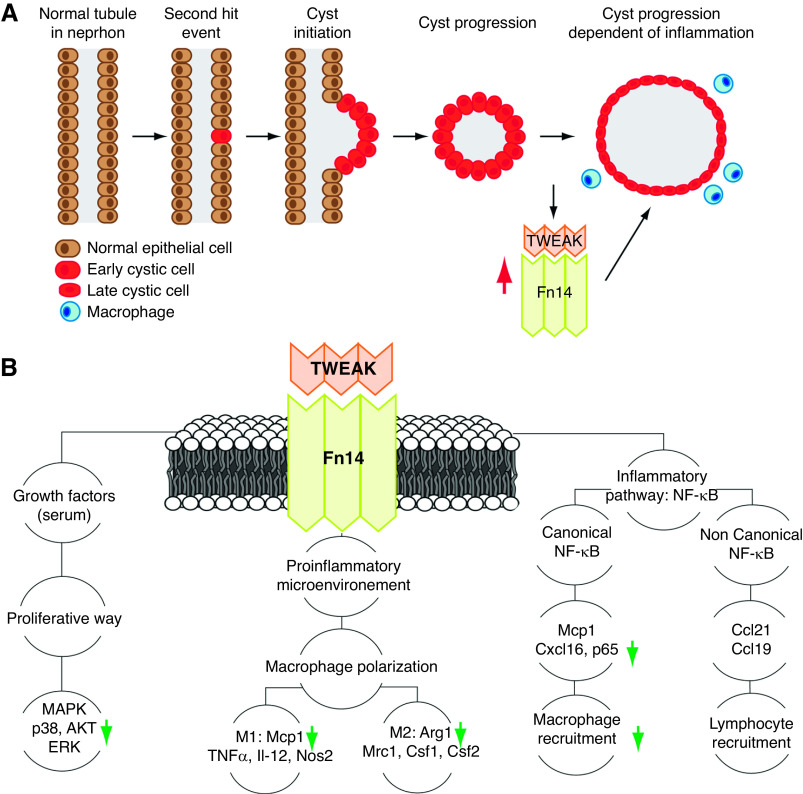Figure 8.
Proposed model of how TWEAK accelerates cyst progression in ADPKD. (A) Mechanism of cyst formation and expansion in ADPKD. In ADPKD nephrons, all tubular epithelial cells contain one mutated and one unaffected copy of PKD1 or PKD2. According to the “two-hit” model of cystogenesis, a second mutation occurs in the unaffected allele in an individual tubular epithelial cell. When the level of functional PC1 or PC2 (products of PKD1 and PKD2, respectively) falls below a critical threshold, cyst formation is initiated. Once cysts are formed, multiple molecular pathways are deregulated, and cysts progressively increase in size. Advanced ADPKD is characterized by macrophage infiltration, proinflammatory chemoattractants, and inflammation-dependent renal injury. In this study, we report that TWEAK and Fn14 are upregulated in ADPKD and contribute to cyst progression. (B) TWEAK pathway. TWEAK is a trimeric cytokine that binds to the Fn14 receptor after trimerization. TWEAK and Fn14 are present in epithelial renal cells and regulate cell proliferation, inflammation, NF-κB activation, and other pathways. We report that targeting TWEAK with a neutralizing antibody reduced the expression of key ADPKD-related protein markers, such as AKT and p38 (proliferative way), Arg1 (M2 macrophage polarization), Mcp1 (M1 macrophage polarization and canonic NF-κB activation), and p65 (canonical NF-κB activation), and reduced macrophage infiltration. Our results suggest the TWEAK/Fn14 axis is a new potential therapeutic target for ADPKD.

